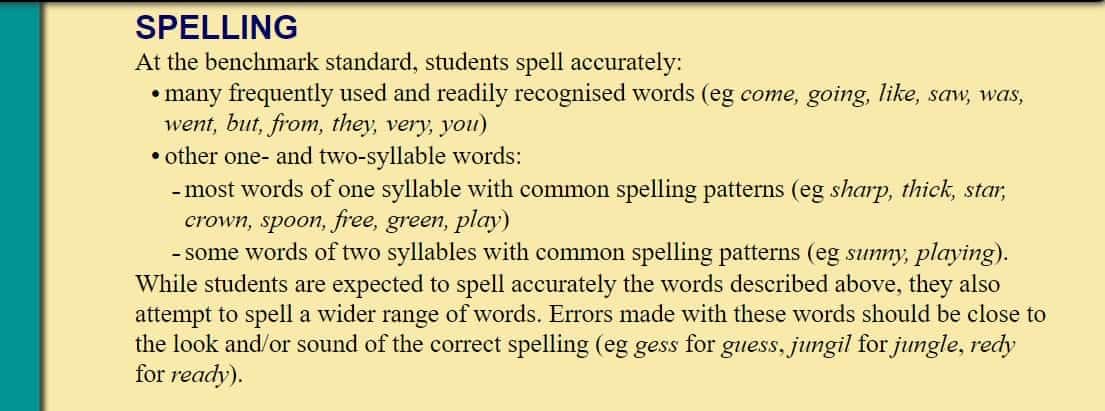Do your students struggle with spelling? Sadly, a lot of Australian students do. Learning to spell is difficult.
In 2013, over 20 thousand Year 3 children failed to achieve above the national minimum standard for spelling((See NAPLAN National Report 2013)). That’s more than 1 in 10 children or 13.4% of Year 3 students across the country.
What’s even scarier is that the national minimum standards are not hard. According to the standard, Year 3 students are expected to correctly spell frequently used words such as was, like, but and you.

And, things get even worse as students get older. By Year 9, 19.7% of students failed to achieve above the minimum benchmarks.
Spelling is a core aspect of literacy, and no one wants to allow a child in their care to remain illiterate.
Yet, whether you are a teacher or a parent, it is a sad reality that at least one of your children will need help learning to spell.
Why Do Students Struggle to Learn to Spell?
First – many kids can spell, and some can spell quite well. However, as the results above show – too many students can’t spell correctly. They find learning to spell challenging.
There are 2 reasons for this.
- Many students are not taught how to spell. Some teachers don’t teach spelling at all, while others set spelling for homework, but do little else. Spelling is an essential skill. If students are going to learn to spell, you need to teach them how to do so. Kids deserve to be taught.
- Those teachers who do try to teach spelling often adopt commercial programs and approaches that use the latest fads and jargon, but which have not been proven to have a significant impact on students’ subsequent spelling achievement.
What Can You Do to Help Students Learn to Spell?
If you genuinely want your students to learn to spell, you need to explicitly teach spelling using a proven program. One proven way to help your students learn to spell is through Direct Instruction.
Direct Instruction involves:
- A carefully sequenced curriculum of knowledge and skills
- The explicit teaching of that curriculum
- Flexible ability grouping, with children placed where they are at, within this curriculum sequence
- Mastery learning, where children progress to the next level only when they have mastered the level they are at (just like in martial arts and swimming classes)
There are specific Direct Instruction programs for several aspects of literacy and numeracy. One such program that can help students learn to spell that is available in Australia is Spelling Mastery.
Spelling Mastery
Spelling Mastery is distributed in Australia through the Australian Council of Educational Research (ACER).
The Spelling Mastery program has 6 levels (suitable for primary classes, and remedial secondary students).
The first step is to place each student at the level that they are at. To do this, you simply give them a series of short placement tests, with 10 words in each. When they get 5 or more words wrong, then you put them in that level.
You then follow a scripted lesson for just 15-20 minutes per day.
Then, as students learn to spell, they progress through the levels.
You can purchase the program from ACER.
Spelling Mastery FAQs
Here are some common questions (and answers) teachers often ask about Spelling Mastery.
Spelling mastery is a daily Direct Instruction program designed to improve your students’ spelling skills.
Direct Instruction combines a carefully sequenced series of lessons with the explicit teaching of skills. It is based on the work of Siegfried Engelmann
First, you use a placement test to assign students to levels based upon their existing spelling skills. Then, you spend 15-30 minutes per day teaching students strategies suited to their developmental level. Depending upon the level, this may include phonemic, morphemic and whole word skills. Students move up a level upon mastery of their existing level.
